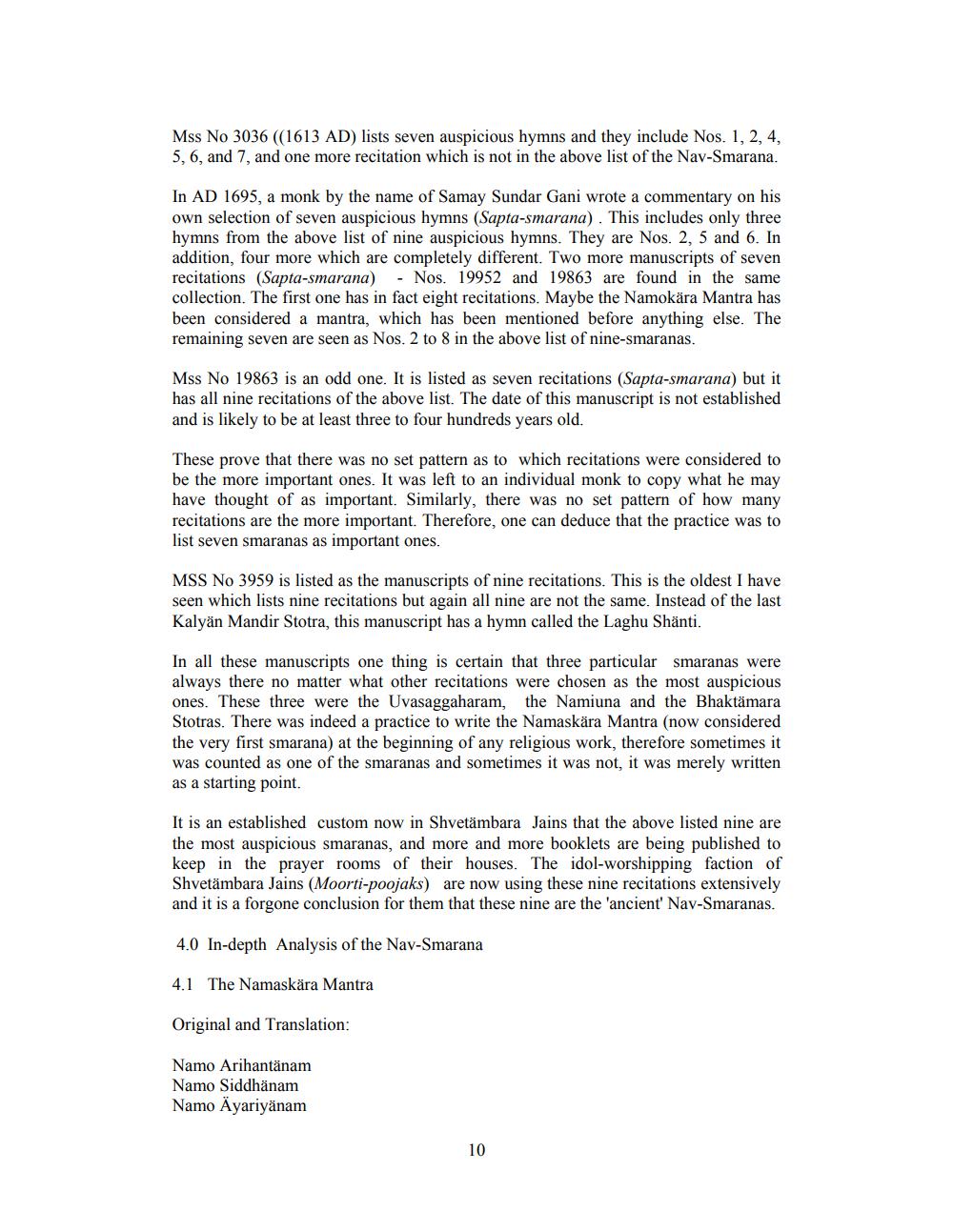________________
Mss No 3036 ((1613 AD) lists seven auspicious hymns and they include Nos. 1, 2, 4, 5, 6, and 7, and one more recitation which is not in the above list of the Nav-Smarana.
In AD 1695, a monk by the name of Samay Sundar Gani wrote a commentary on his own selection of seven auspicious hymns (Sapta-smarana). This includes only three hymns from the above list of nine auspicious hymns. They are Nos. 2, 5 and 6. In addition, four more which are completely different. Two more manuscripts of seven recitations (Sapta-smarana) - Nos. 19952 and 19863 are found in the same collection. The first one has in fact eight recitations. Maybe the Namokära Mantra has been considered a mantra, which has been mentioned before anything else. The remaining seven are seen as Nos. 2 to 8 in the above list of nine-smaranas.
Mss No 19863 is an odd one. It is listed as seven recitations (Sapta-smarana) but it has all nine recitations of the above list. The date of this manuscript is not established and is likely to be at least three to four hundreds years old.
These prove that there was no set pattern as to which recitations were considered to be the more important ones. It was left to an individual monk to copy what he may have thought of as important. Similarly, there was no set pattern of how many recitations are the more important. Therefore, one can deduce that the practice was to list seven smaranas as important ones.
MSS No 3959 is listed as the manuscripts of nine recitations. This is the oldest I have seen which lists nine recitations but again all nine are not the same. Instead of the last Kalyan Mandir Stotra, this manuscript has a hymn called the Laghu Shänti.
In all these manuscripts one thing is certain that three particular smaranas were always there no matter what other recitations were chosen as the most auspicious ones. These three were the Uvasaggaharam, the Namiuna and the Bhaktämara Stotras. There was indeed a practice to write the Namaskära Mantra (now considered the very first smarana) at the beginning of any religious work, therefore sometimes it was counted as one of the smaranas and sometimes it was not, it was merely written as a starting point.
It is an established custom now in Shvetämbara Jains that the above listed nine are the most auspicious smaranas, and more and more booklets are being published to keep in the prayer rooms of their houses. The idol-worshipping faction of Shvetämbara Jains (Moorti-poojaks) are now using these nine recitations extensively and it is a forgone conclusion for them that these nine are the 'ancient' Nav-Smaranas.
4.0 In-depth Analysis of the Nav-Smarana
4.1 The Namaskära Mantra
Original and Translation:
Namo Arihantänam Namo Siddhänam Namo Ayariyanam
10




